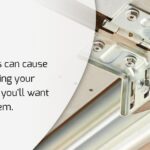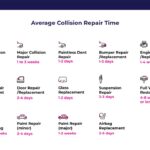Rear panel leaks in your car can be a nuisance, leading to water damage, rust, and unpleasant odors inside your vehicle. Often, these leaks are related to the rear spoiler and its mounting points. This guide, brought to you by the experts at Car Repair Online, will walk you through the process of diagnosing and repairing a rear panel leak, focusing on the spoiler area, common in many models like the Honda HRV. While specific to certain designs, these principles can apply broadly to rear hatch and panel leak repairs.
Identifying and Addressing Rear Panel Leaks
Before diving into repairs, it’s crucial to confirm the leak’s source. Water accumulating in your trunk, damp carpets in the rear cargo area, or water stains on the rear interior panels are strong indicators of a rear panel leak. Sometimes, the leak is subtle, presenting as mildew or a musty smell. Carefully inspect the area, paying close attention to seams, weather stripping around the rear window and hatch, and particularly the spoiler mounting points if your vehicle has one.
Tools and Materials for Rear Panel Leak Repair
For this repair, you’ll likely need a few basic tools and materials. Having everything ready beforehand will streamline the process:
- Socket wrench with 10mm socket: For removing spoiler bolts.
- Shop blanket or soft cloth: To protect your car’s paint.
- Plastic trim removal tools (optional but recommended): To gently pry and avoid damaging plastic parts.
- Duct tape (for temporary sealing): In case of parts delays.
- Replacement pop pins (if necessary): Check dealer stock beforehand.
- Foam weatherstripping: To eliminate rattles and improve sealing.
- Chassis grease or silicone sealant: For waterproofing pin bases.
- Clean cloths and mild cleaner: For cleaning surfaces.
Step-by-Step Guide to Repairing a Rear Panel Leak (Spoiler Area Focus)
The following steps outline how to access and address potential leak points around a rear spoiler, using a Honda HRV as a primary example. Always consult your vehicle’s service manual for specific instructions and safety precautions.
Preparing for Spoiler Removal
Start by protecting your vehicle’s roof. Lay a shop blanket or soft cloth over the rear portion of the roof to prevent scratches while working around the spoiler. This is especially important when maneuvering the spoiler during removal.
Detaching the Spoiler
Locate the bolts securing the spoiler from underneath the rear hatch. In many cases, including the Honda HRV, these are typically 10mm bolts. Carefully remove these bolts using your socket wrench. Remember that the spoiler is often held in place by both bolts and plastic pop pins.
Once the bolts are removed, you’ll need to release the pop pins. These pins can be quite firm. Gently but firmly begin to detach the spoiler. Using plastic trim tools can help minimize the risk of damage to the spoiler or the vehicle’s paint. Work your way around the spoiler’s edges, carefully disengaging each pop pin. Avoid excessive force to prevent breaking the plastic spoiler or the pins themselves.
Disconnecting Components
With the spoiler now loose, carefully lift and rest it on the protective blanket you placed earlier. Before fully removing it, you’ll likely need to disconnect a washer fluid hose and an electrical connector for the third brake light, if applicable. Gently disconnect these components, taking note of their original positions for reassembly.
Inspecting and Repairing the Leak Area
Once the spoiler is removed, thoroughly inspect the spoiler itself and the area on the vehicle where it was mounted.
- Pop Pins: Check each pop pin for damage. Look for broken pins or bases that have pulled away from the hatch. If any are damaged, replacement is crucial for a secure and watertight reinstallation. Consider contacting your local dealer to ensure replacement pins are available before proceeding with removal, especially if this is your daily driver.
- Seals and O-rings: Examine the thin rubber O-rings around each pin on the spoiler. Ensure none are torn or missing. While small, these contribute to water sealing and preventing rattles.
- Water Entry Points: Look for any signs of water ingress around the pin holes or bolt holes on the vehicle’s hatch. Check for damaged or compressed weather stripping around the hatch opening itself.
To enhance water sealing and prevent future leaks:
- Chassis Grease or Silicone Sealant: Apply a small amount of chassis grease or clear silicone sealant into each plastic base for the pop pins. This will create an extra layer of waterproofing when the spoiler is reinstalled. Note: Silicone sealant provides a more permanent seal but makes future removal more difficult.
- Foam Weatherstripping: To address potential rattles and improve sealing against the glass and hatch, apply peel-and-stick foam weatherstripping to the bottom edge of the spoiler where it contacts the glass and in a few spots on the top edge. This compressible foam will create a tighter, rattle-free fit.
Reinstalling the Spoiler
Reinstallation is essentially the reverse of removal.
- Reconnect Components: Reconnect the washer fluid hose and electrical connector to the spoiler.
- Align and Secure Spoiler: Carefully align the spoiler with the mounting holes and begin pressing it back into place. Ensure all pop pins are correctly aligned with their corresponding holes.
- Engage Pop Pins: Firmly and evenly press down on the spoiler to engage all the pop pins. You should hear or feel them click into place.
- Reinstall Bolts: Reinstall the 10mm bolts from underneath the hatch and tighten them to the manufacturer’s specified torque, if available, or snug them down firmly but avoid over-tightening into the plastic spoiler.
Final Checks and Leak Test
After reinstallation, double-check that all components are securely fastened and that the spoiler sits flush against the vehicle body. As a final step, test for leaks. You can do this by gently pouring water over the repaired area, simulating rain, and checking for any water intrusion inside the vehicle. Alternatively, a garden hose can be used for a more thorough test, but avoid high pressure directly at seals.
Conclusion
Repairing a rear panel leak, particularly one related to the spoiler, is a manageable DIY task for many car owners. By carefully following these steps, focusing on proper sealing and addressing potential issues with pop pins and weatherstripping, you can effectively resolve the leak and protect your vehicle from water damage. Remember to always prioritize careful disassembly and reassembly to avoid damaging your vehicle’s components. For more detailed guides and expert advice, visit Car Repair Online for all your automotive DIY needs.


